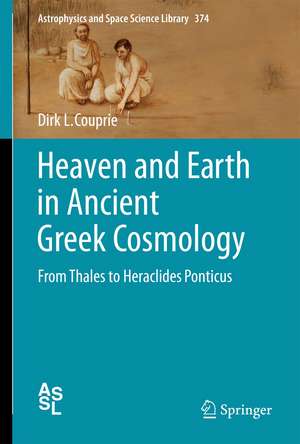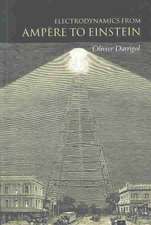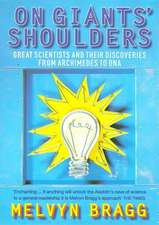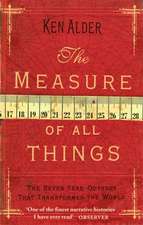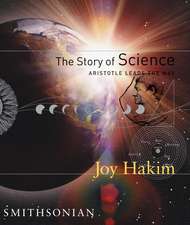Heaven and Earth in Ancient Greek Cosmology: From Thales to Heraclides Ponticus: Astrophysics and Space Science Library, cartea 374
Autor Dirk L. Couprieen Limba Engleză Paperback – 19 apr 2013
| Toate formatele și edițiile | Preț | Express |
|---|---|---|
| Paperback (1) | 640.88 lei 6-8 săpt. | |
| Springer – 19 apr 2013 | 640.88 lei 6-8 săpt. | |
| Hardback (1) | 568.19 lei 38-44 zile | |
| Springer – 6 apr 2011 | 568.19 lei 38-44 zile |
Din seria Astrophysics and Space Science Library
- 24%
 Preț: 799.08 lei
Preț: 799.08 lei - 15%
 Preț: 647.92 lei
Preț: 647.92 lei - 18%
 Preț: 983.81 lei
Preț: 983.81 lei - 18%
 Preț: 790.28 lei
Preț: 790.28 lei -
 Preț: 359.85 lei
Preț: 359.85 lei -
 Preț: 389.70 lei
Preț: 389.70 lei - 20%
 Preț: 691.13 lei
Preț: 691.13 lei - 18%
 Preț: 1011.27 lei
Preț: 1011.27 lei -
 Preț: 402.56 lei
Preț: 402.56 lei - 15%
 Preț: 664.93 lei
Preț: 664.93 lei -
 Preț: 398.15 lei
Preț: 398.15 lei - 18%
 Preț: 954.77 lei
Preț: 954.77 lei -
 Preț: 411.04 lei
Preț: 411.04 lei - 18%
 Preț: 1225.31 lei
Preț: 1225.31 lei - 18%
 Preț: 1843.29 lei
Preț: 1843.29 lei -
 Preț: 393.13 lei
Preț: 393.13 lei -
 Preț: 400.26 lei
Preț: 400.26 lei - 18%
 Preț: 953.82 lei
Preț: 953.82 lei - 18%
 Preț: 960.61 lei
Preț: 960.61 lei -
 Preț: 398.35 lei
Preț: 398.35 lei -
 Preț: 390.84 lei
Preț: 390.84 lei -
 Preț: 413.76 lei
Preț: 413.76 lei -
 Preț: 416.64 lei
Preț: 416.64 lei - 18%
 Preț: 947.67 lei
Preț: 947.67 lei -
 Preț: 404.51 lei
Preț: 404.51 lei - 18%
 Preț: 956.50 lei
Preț: 956.50 lei -
 Preț: 403.75 lei
Preț: 403.75 lei - 18%
 Preț: 1229.40 lei
Preț: 1229.40 lei - 18%
 Preț: 1224.99 lei
Preț: 1224.99 lei -
 Preț: 404.29 lei
Preț: 404.29 lei - 15%
 Preț: 654.77 lei
Preț: 654.77 lei - 18%
 Preț: 1248.20 lei
Preț: 1248.20 lei - 18%
 Preț: 955.25 lei
Preț: 955.25 lei - 18%
 Preț: 1846.28 lei
Preț: 1846.28 lei - 18%
 Preț: 1233.06 lei
Preț: 1233.06 lei - 18%
 Preț: 1234.77 lei
Preț: 1234.77 lei -
 Preț: 411.64 lei
Preț: 411.64 lei
Preț: 640.88 lei
Preț vechi: 753.97 lei
-15% Nou
Puncte Express: 961
Preț estimativ în valută:
122.66€ • 127.56$ • 102.64£
122.66€ • 127.56$ • 102.64£
Carte tipărită la comandă
Livrare economică 15-29 martie
Preluare comenzi: 021 569.72.76
Specificații
ISBN-13: 9781461428404
ISBN-10: 1461428408
Pagini: 296
Ilustrații: XXXIV, 262 p.
Dimensiuni: 155 x 235 x 16 mm
Greutate: 0.43 kg
Ediția:2011
Editura: Springer
Colecția Springer
Seria Astrophysics and Space Science Library
Locul publicării:New York, NY, United States
ISBN-10: 1461428408
Pagini: 296
Ilustrații: XXXIV, 262 p.
Dimensiuni: 155 x 235 x 16 mm
Greutate: 0.43 kg
Ediția:2011
Editura: Springer
Colecția Springer
Seria Astrophysics and Space Science Library
Locul publicării:New York, NY, United States
Public țintă
ResearchCuprins
The Archaic World-Picture.- Archaic Astronomical Instruments.- How Thales Was Able to Predict the Solar Eclipse of 28 May 585 B.C..- The Shape of the Earth According to Thales.- The Riddle of the Celestial Axis.- The First Map of the Earth.- Anaximander, and the Discovery of Space.- Anaximander, A Survey of his Ideas.- The Discovery of Space: Anaximander’s Cosmology.- Anaximander’s Numbers: The Dimensions of the Universe.- The Visualization of Anaximander’s World-Picture.- Bellows or Lightning? A Curious Terminology Explained.- Critique of an Alleged Cosmic Architecture.- A Survey from Anaximander to Aristarchus.- With Fear For His Own Life: Anaxagoras as a Cosmologist.- The Sun at the Horizon: Anaxagoras’ Argument for a Flat Earth.- The Sun is as Big as the Peloponnesus.- The Dodecahedron, or the Shape of the Earth According to Plato.- Fear of Falling: Aristotle on the Shape of the Earth.- Heraclides Ponticus and the Infinite Universe.-
Recenzii
From the reviews:
“Independent researcher/philosopher Couprie has extended his doctoral dissertation work on Anaximander (610-547 BCE) to situate him within the context of Greek history and philosophy of astronomy. … Excellent illustrations assist the reader in visualizing the ancient viewpoints. The plethora of detail and the subject matter make this a book most likely to be appreciated by experts rather than general readers. Summing Up: Recommended. Researchers and professionals.” (M.-K. Hemenway, Choice, Vol. 49 (2), October, 2011)
“Independent researcher/philosopher Couprie has extended his doctoral dissertation work on Anaximander (610-547 BCE) to situate him within the context of Greek history and philosophy of astronomy. … Excellent illustrations assist the reader in visualizing the ancient viewpoints. The plethora of detail and the subject matter make this a book most likely to be appreciated by experts rather than general readers. Summing Up: Recommended. Researchers and professionals.” (M.-K. Hemenway, Choice, Vol. 49 (2), October, 2011)
Textul de pe ultima copertă
In Miletus, about 550 B.C., together with our world-picture cosmology was born. This book tells the story. In Part One the reader is introduced in the archaic world-picture of a flat earth with the cupola of the celestial vault onto which the celestial bodies are attached. One of the subjects treated in that context is the riddle of the tilted celestial axis. This part also contains an extensive chapter on archaic astronomical instruments. Part Two shows how Anaximander (610-547 B.C.) blew up this archaic world-picture and replaced it by a new one that is essentially still ours. He taught that the celestial bodies orbit at different distances and that the earth floats unsupported in space. This makes him the founding father of cosmology. Part Three discusses topics that completed the new picture described by Anaximander. Special attention is paid to the confrontation between Anaxagoras and Aristotle on the question whether the earth is flat or spherical, and on the battle between Aristotle and Heraclides Ponticus on the question whether the universe is finite or infinite.
“In this book, Dirk L. Couprie presents his efforts at clarifying the views of the pioneers of theoretical cosmology. It covers the crucial period from about the middle of the sixth until the middle of the fourth century B.C., with its focus on the magnificent figure of Anaximander. The book by Dirk Couprie constitutes an important and in several respects indispensable contribution to this field.”
Dmitri Panchenko
St. Petersburg State University
“In this book, Dirk L. Couprie presents his efforts at clarifying the views of the pioneers of theoretical cosmology. It covers the crucial period from about the middle of the sixth until the middle of the fourth century B.C., with its focus on the magnificent figure of Anaximander. The book by Dirk Couprie constitutes an important and in several respects indispensable contribution to this field.”
Dmitri Panchenko
St. Petersburg State University
Caracteristici
Contains over one hundred pictures to elucidate the text, many of which are originally drawn by the author Provides readers with a comprehensive treatment of archaic astronomical instruments and groundbreaking interpretations for how they might have been used Provides dozens of challenging new interpretations and historical perspectives on ancient Greek cosmology Includes supplementary material: sn.pub/extras
